Abstract
Freundlich, Martin (University of Minnesota, Minneapolis) and Herman C. Lichstein. Tryptophanase-tryptophan synthetase systems in Escherichia coli. I. Effect of tryptophan and related compounds. J. Bacteriol. 84:979–987. 1962.—The effect of tryptophan and related compounds on tryptophanase and tryptophan synthetase formation in Escherichia coli was determined. Several of these compounds stimulated the formation of tryptophanase while concomitantly decreasing the production of synthetase. A number of tryptophan analogues were found to inhibit growth. The possible mode of action of these substances was examined further. 5-Hydroxytryptophan greatly inhibited the formation of synthetase and also reduced growth. Its inhibitory action on growth was attributed, at least partially, to the false feedback inhibition of anthranilic acid formation. Tryptamine was found to be a potent inhibitor of the activity of synthetase, as well as of the enzyme(s) involved in the synthesis of anthranilic acid from shikimic acid. However, growth reduction was only partially reversed by tryptophan. Indole-3-acetic acid and indole-3-propionic acid decreased growth and increased the formation of synthetase six- to eightfold. The action of these compounds was ascribed to their ability to block the endogenous formation of tryptophan.
Full text
PDF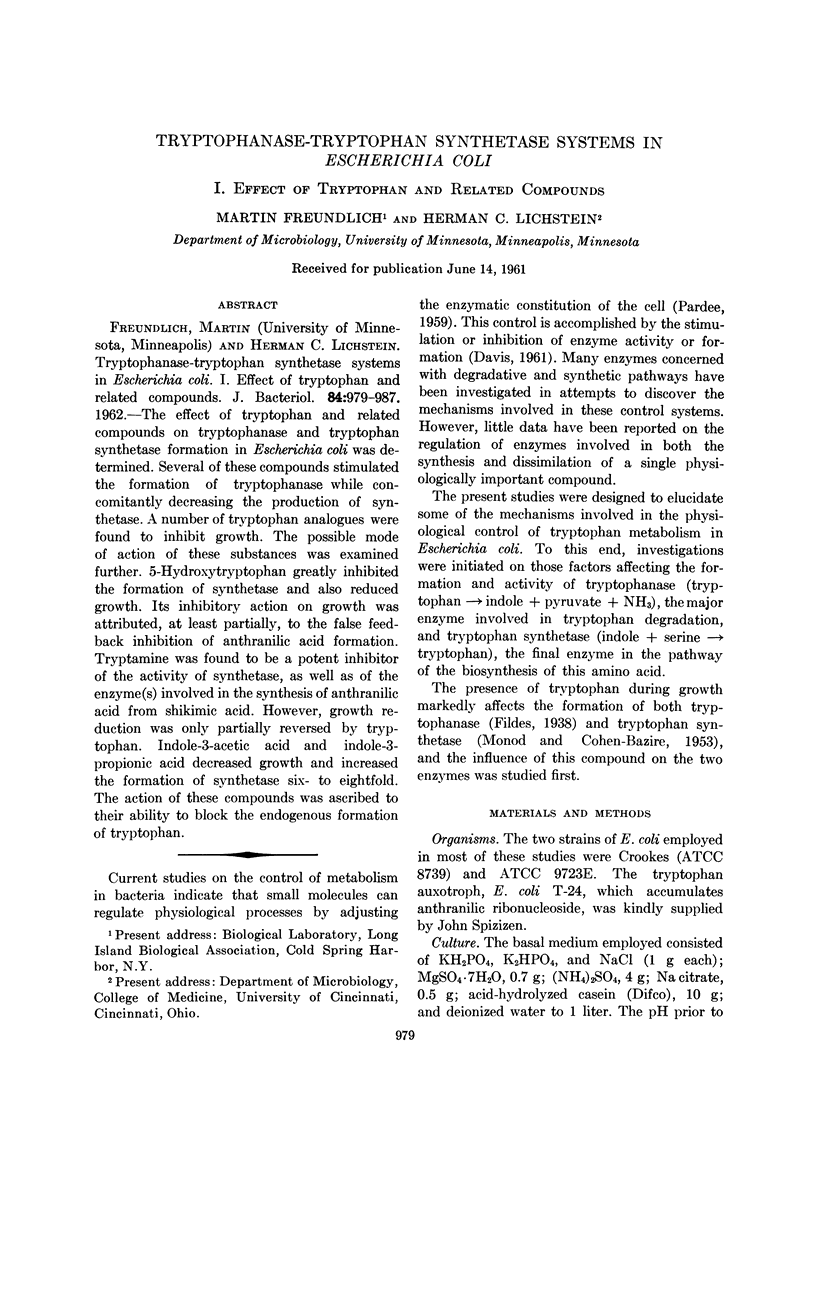
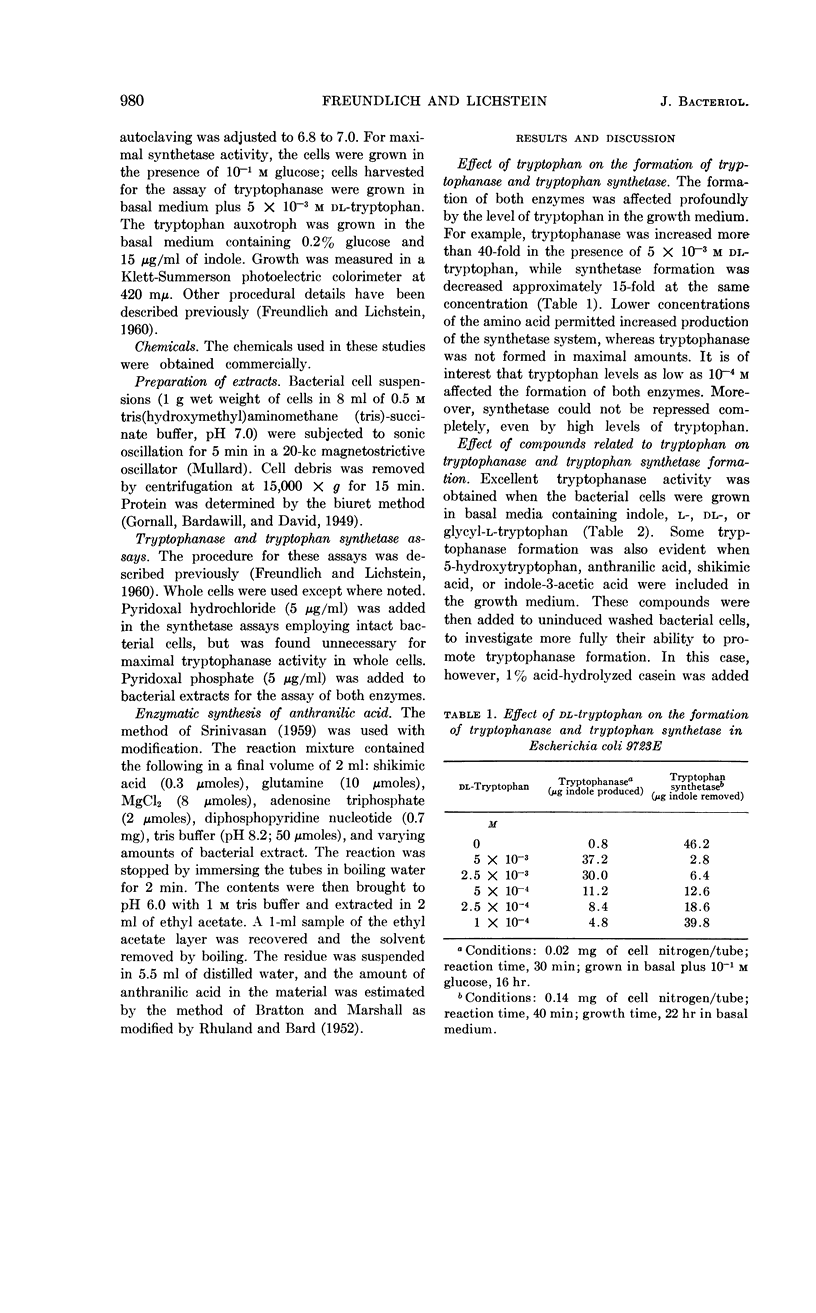

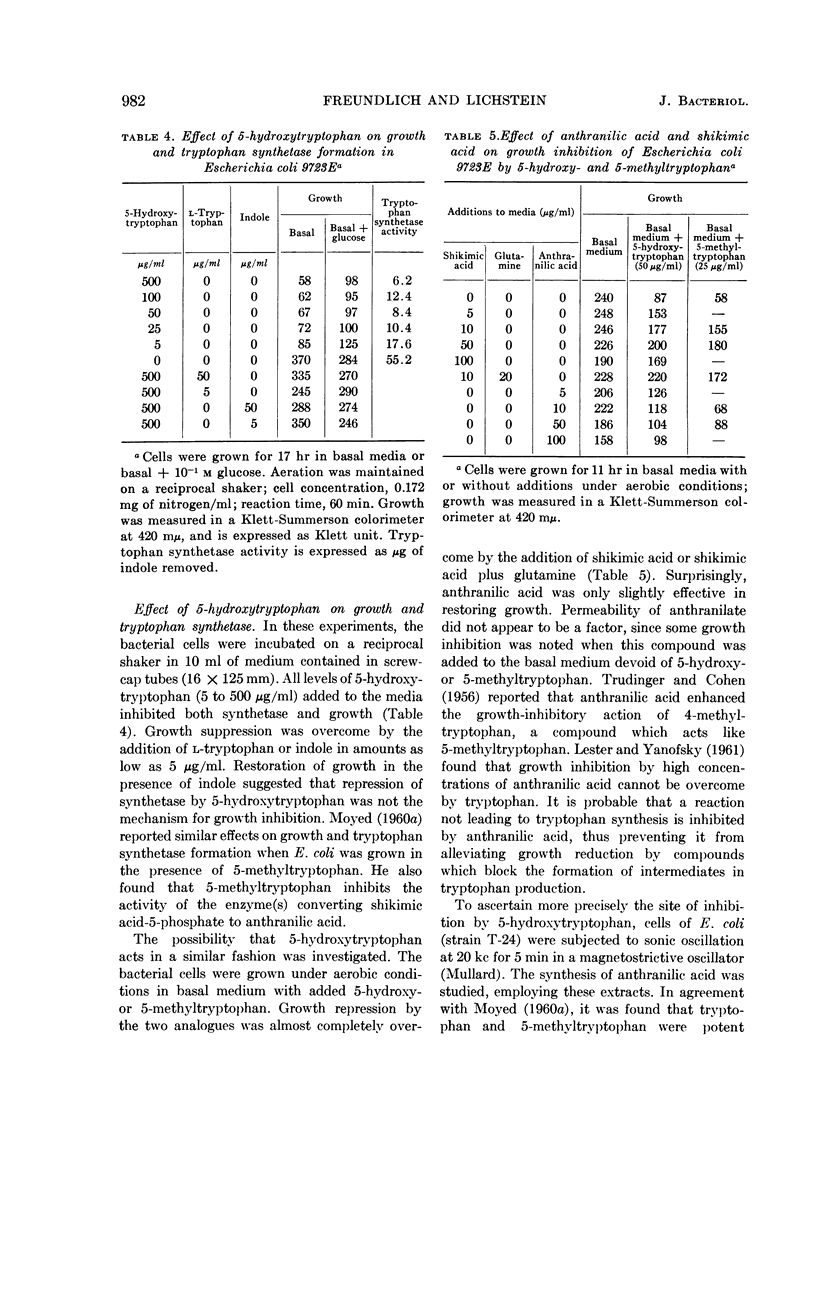
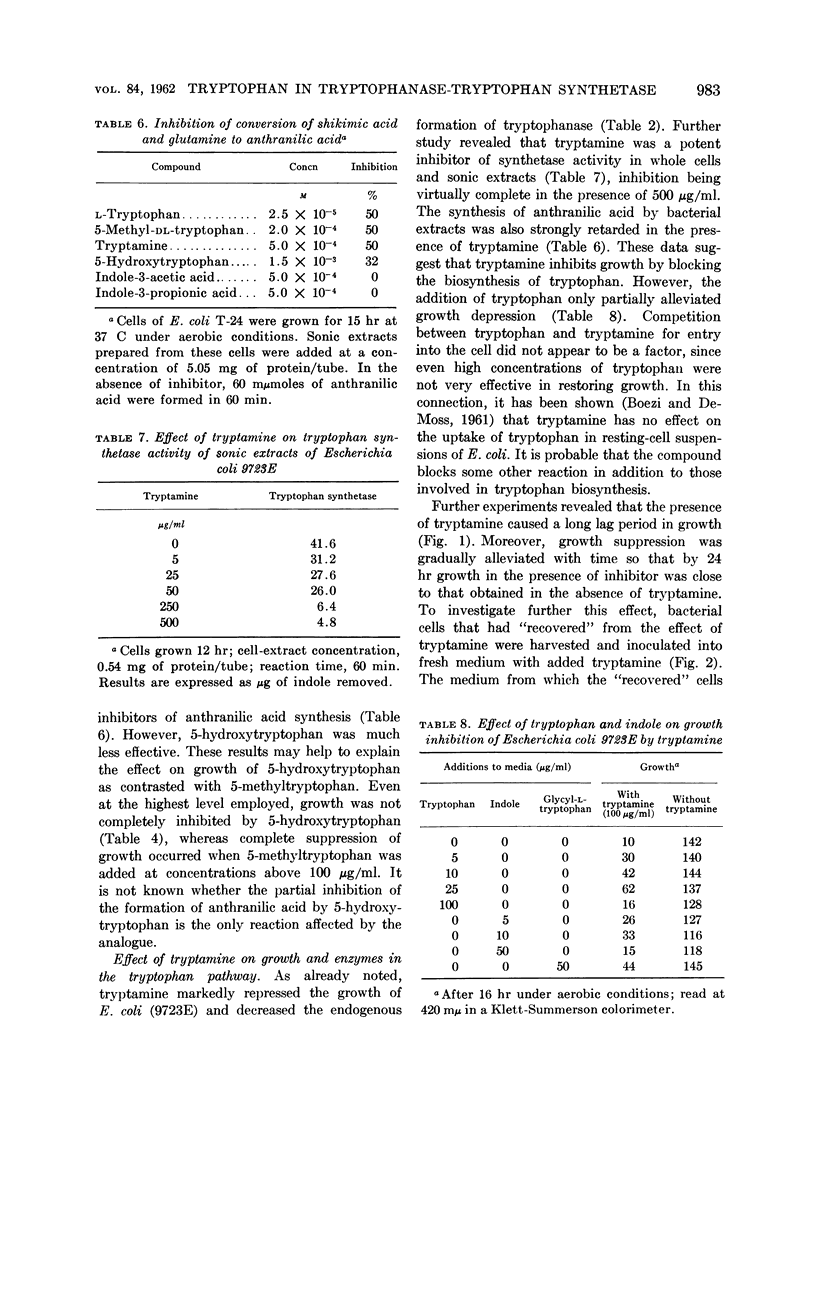
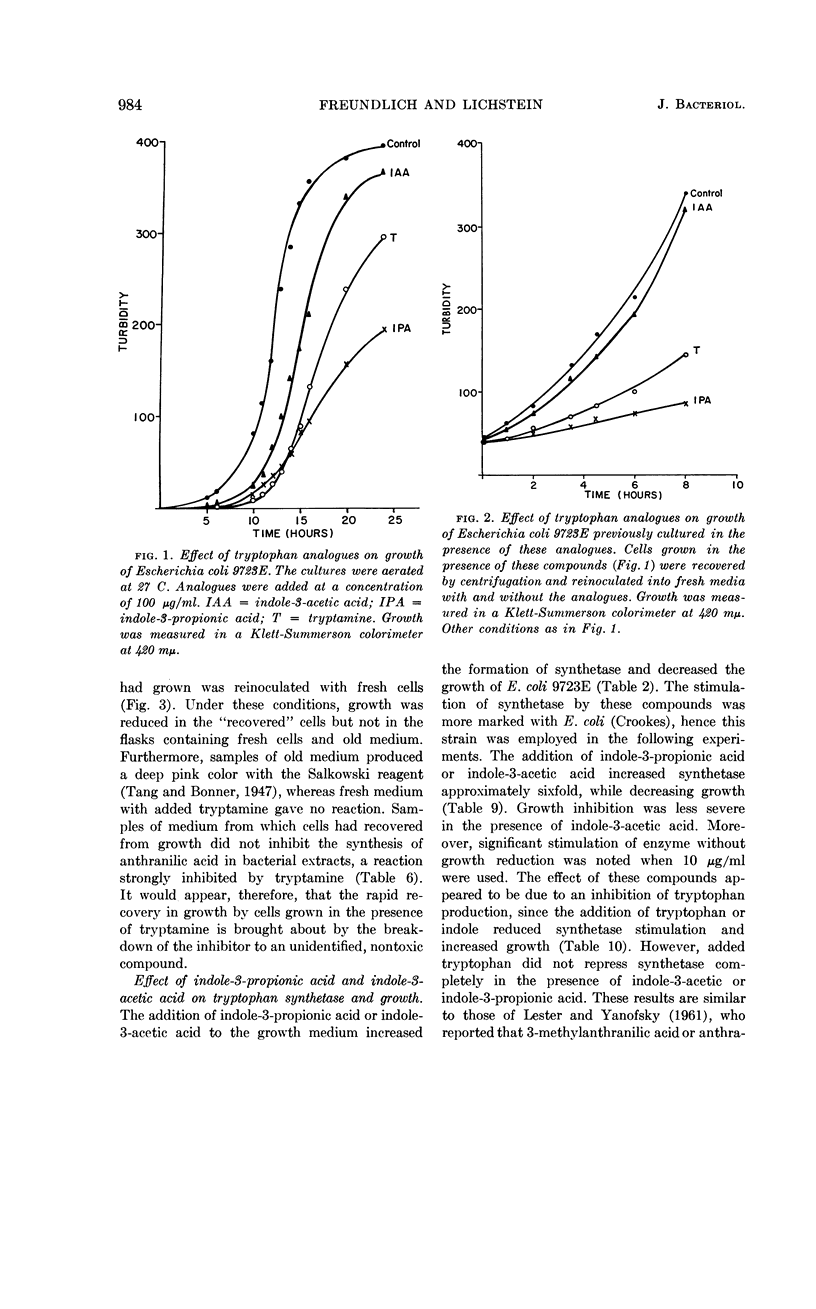
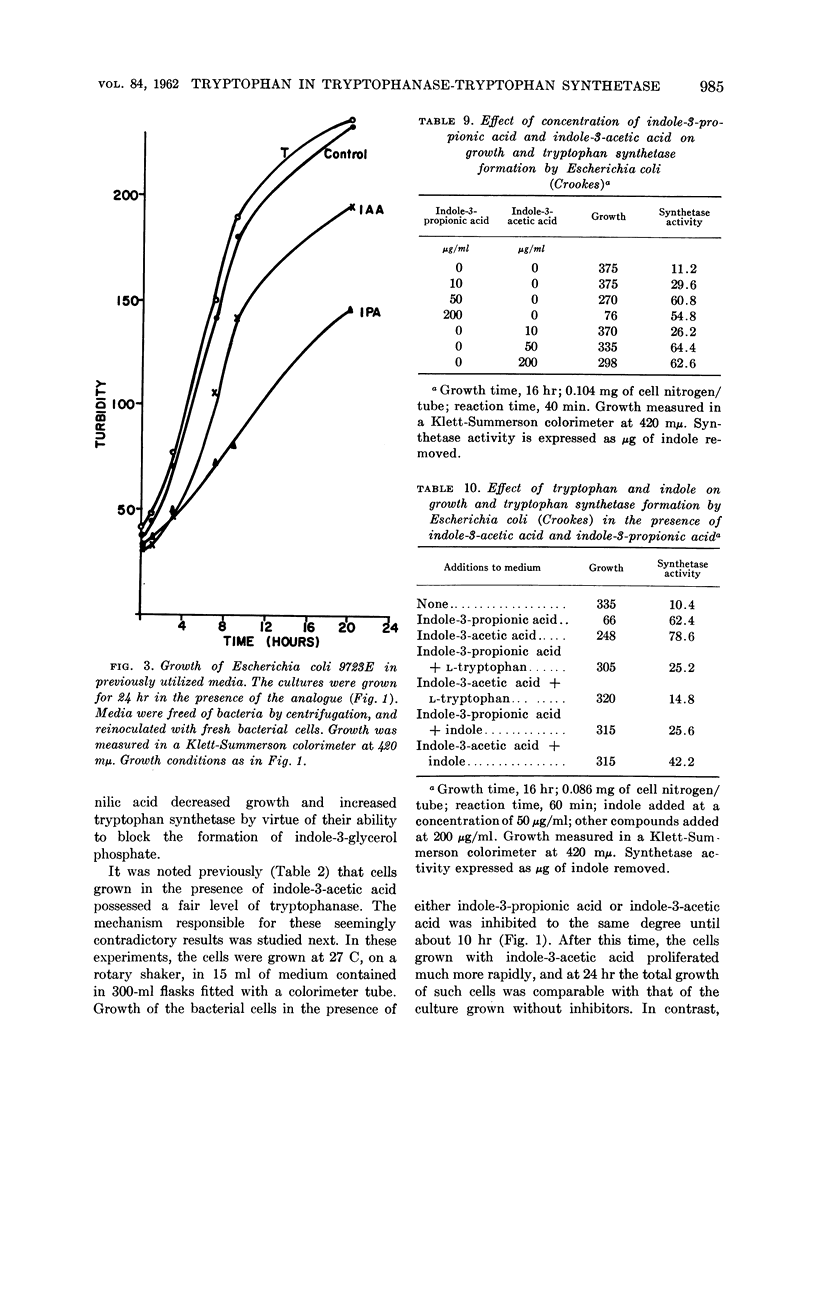
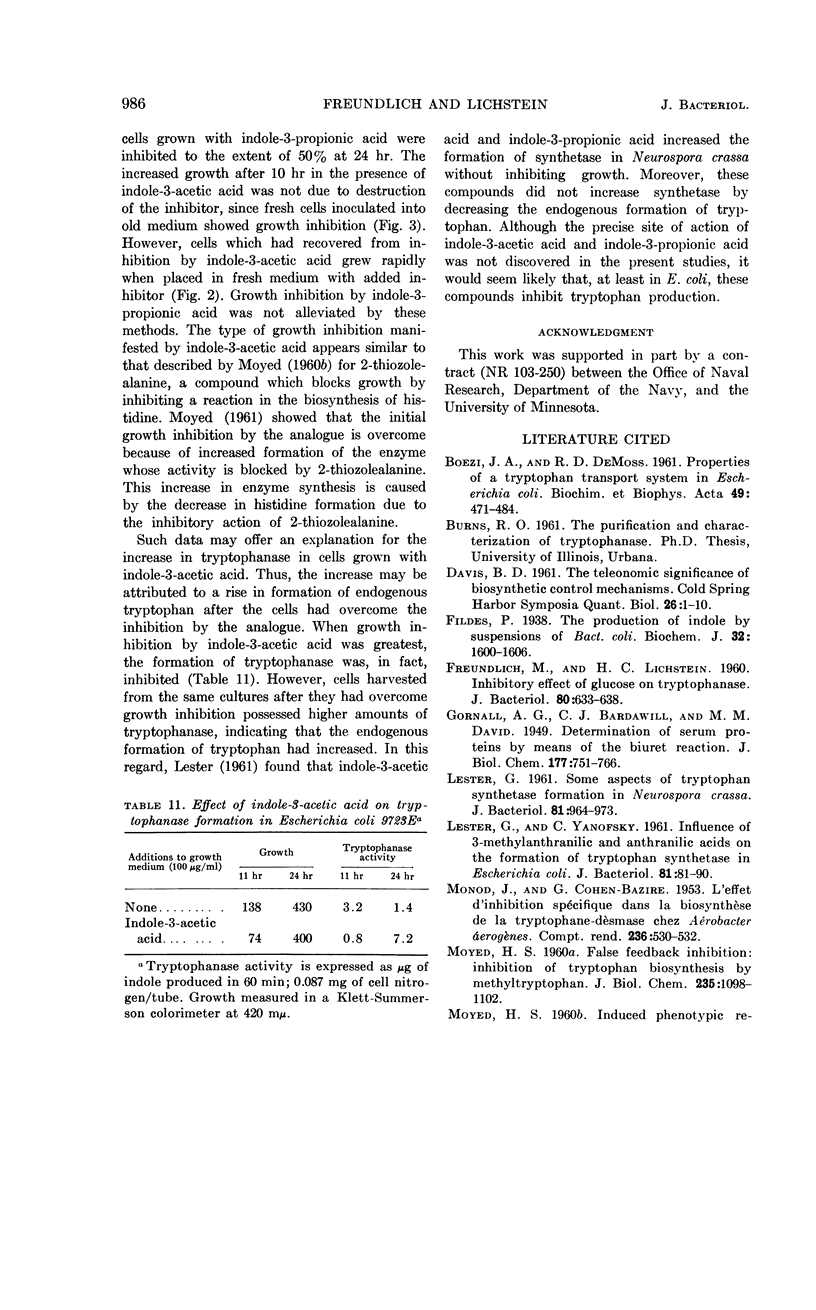
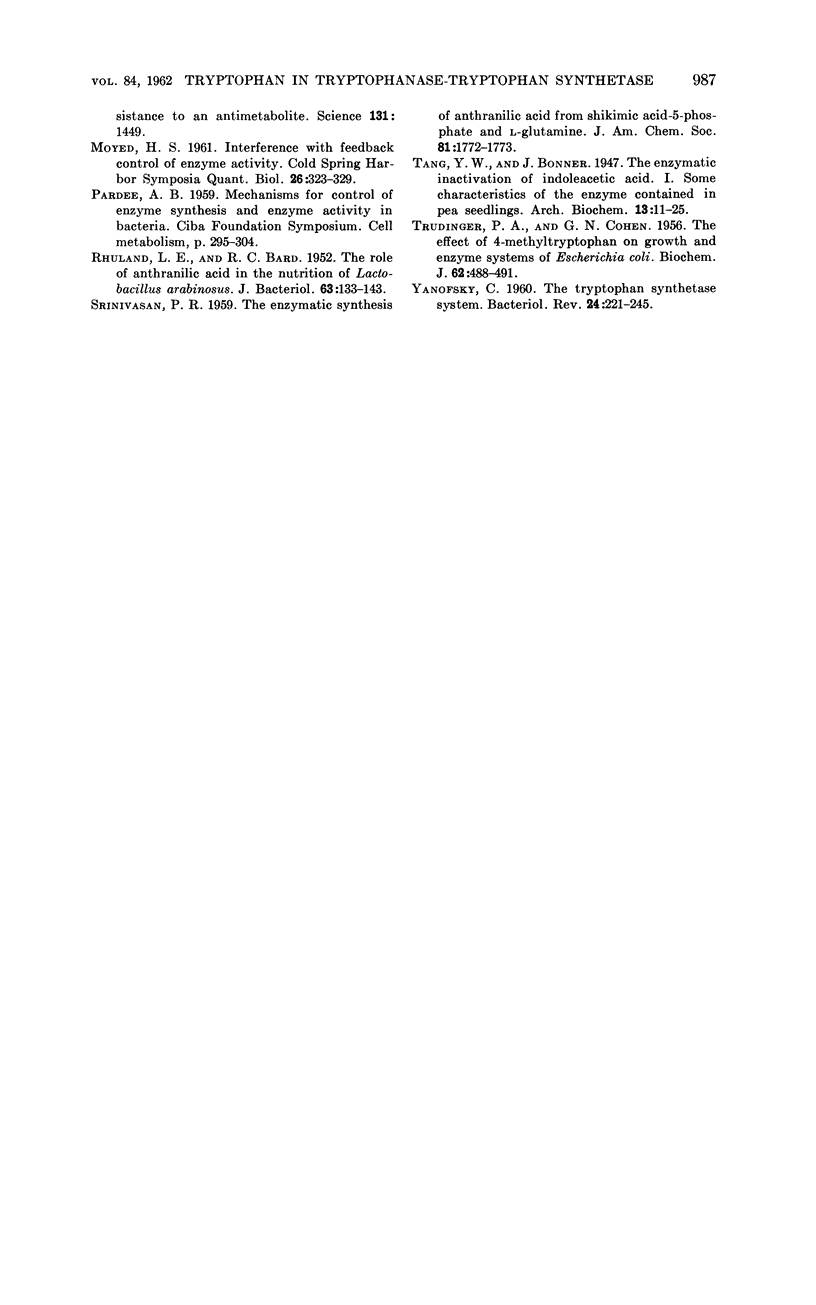
Selected References
These references are in PubMed. This may not be the complete list of references from this article.
- DAVIS B. D. The teleonomic significance of biosynthetic control mechanisms. Cold Spring Harb Symp Quant Biol. 1961;26:1–10. doi: 10.1101/sqb.1961.026.01.005. [DOI] [PubMed] [Google Scholar]
- FREUNDLICH M., LICHSTEIN H. C. Inhibitory effect of glucose on tryptophanase. J Bacteriol. 1960 Nov;80:633–638. doi: 10.1128/jb.80.5.633-638.1960. [DOI] [PMC free article] [PubMed] [Google Scholar]
- Fildes P. The production of indole by suspensions of Bact. coli. Biochem J. 1938 Sep;32(9):1600–1606. doi: 10.1042/bj0321600. [DOI] [PMC free article] [PubMed] [Google Scholar]
- LESTER G. Some aspects of tryptophan synthetase formation in Neurospora crassa. J Bacteriol. 1961 Jun;81:964–973. doi: 10.1128/jb.81.6.964-973.1961. [DOI] [PMC free article] [PubMed] [Google Scholar]
- LESTER G., YANOFSKY C. Influence of 3-methylanthranilic and anthranilic acids on the formation of tryptophan synthetase in Escherichia coli. J Bacteriol. 1961 Jan;81:81–90. doi: 10.1128/jb.81.1.81-90.1961. [DOI] [PMC free article] [PubMed] [Google Scholar]
- MONOD J., COHEN-BAZIRE G. L'effet d'inhibition spécifique dans la biosynthèse de la tryptophane-desmase chez Aerobacter aerogenes. C R Hebd Seances Acad Sci. 1953 Feb 2;236(5):530–532. [PubMed] [Google Scholar]
- MOYED H. S. False feedback inhibition: inhibition of tryptophan biosynthesis by 5-methyltryptophan. J Biol Chem. 1960 Apr;235:1098–1102. [PubMed] [Google Scholar]
- MOYED H. S. Interference with feedback control of enzyme activity. Cold Spring Harb Symp Quant Biol. 1961;26:323–329. doi: 10.1101/sqb.1961.026.01.039. [DOI] [PubMed] [Google Scholar]
- RHULAND L. E., BARD R. C. The role of anthranilic acid in the nutrition of Lactobacillus arabinosus. J Bacteriol. 1952 Jan;63(1):133–143. doi: 10.1128/jb.63.1.133-143.1952. [DOI] [PMC free article] [PubMed] [Google Scholar]
- TRUDINGER P. A., COHEN G. N. The effect of 4-methyltryptophan on growth and enzyme systems of Escherichia coli. Biochem J. 1956 Mar;62(3):488–491. doi: 10.1042/bj0620488. [DOI] [PMC free article] [PubMed] [Google Scholar]
- YANOFSKY C. The tryptophan synthetase system. Bacteriol Rev. 1960 Jun;24(2):221–245. doi: 10.1128/br.24.2.221-245.1960. [DOI] [PMC free article] [PubMed] [Google Scholar]


